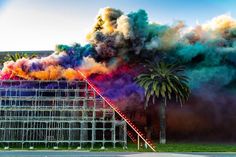Whether you are importing fireworks from a foreign country or planning to do so yourself, you should prepare certain documents to ensure you can get your product through customs.
APA Standard 87-1
APA Standard 87-1 is a consensus standard published by the American Pyrotechnics Association (APA) that describes the basic requirements for approval and transportation of theatrical pyrotechnics. It also provides a list of permissible and restricted chemicals and covers construction, classification, and approval.
APA Standard 87-1 was first adopted by the U.S. Department of Transportation in 1987. It has since gone through a lengthy review by DOT and is now part of Title 49 of the Code of Federal Regulations. This means that APA 87-1 can be used as a reference by companies seeking EX approvals. It is intended to reduce regulatory burdens and make it easier for the regulated community to get certification.
The rulemaking process is being undertaken to increase regulatory flexibility while retaining a high level of safety. The proposed rule will clarify what the FCA certification process is and provide more clarity for manufacturers. The final rule will also reduce PHMSA's oversight of the Fireworks approval program by removing a requirement that FCAs be inspected by the agency.

Source:https://i.pinimg.com
AFSL standards include all CPSC and DOT fireworks regulations
CPSC has been conducting a thorough review of all its fireworks regulations in recent years. The agency has identified a number of revisions or clarifications that would make the rules more effective. Despite these efforts, the agency has not yet made any changes to its current fireworks rules.
The American Fireworks Standards Laboratory (AFSL) is a nonprofit organization that develops voluntary consumer fireworks safety standards. AFSL members include importers, distributors, and manufacturers of various types of fireworks. These groups represent about 85 percent of the domestic fireworks industry.
The AFSL Standard provides a comprehensive set of safety standards. It includes standards for the manufacture, classification, approval, transportation, and safe storage of China fireworks. The AFSL also serves as a third-party laboratory for the fireworks industry. It also offers fireworks producers the opportunity to participate in the development of standards for their products.

Source:https://i.pinimg.com
Physical examination of a sample for pyrotechnic composition
Several colorimetric tests have been developed for detecting the pyrotechnics composition in fireworks. Specifically, the most frequently used chemical compounds are oxidizer agents and perchlorate salts. In addition, several colorimetric tests are available for detecting nitrate anions.
In order to investigate the chemical detection capabilities of inorganic oxidizers in postal packages, we performed a series of experiments. The first was a direct in-field chemical detection study on cardboard parcels. In this case, we used infrared thermal desorption (ITD) and mass spectrometry.
The IRTD-DART-MS technique was able to classify flash powder formulations, black powder, and flash powder + black powder formulations. However, due to low vapor pressures, we were unable to detect the presence of inorganic oxidizers at the thermal desorption temperature. In addition, the background nitrate concentration was too high to enable the characterization of alarm thresholds.
Current approval/certification process
Currently, the approval and certification process for importing fireworks requires a manufacturer to submit an application to PHMSA, which takes about 120 days for review. This is an unnecessary delay. It also reduces the availability of new products in the seasonal market. These delays have an economic impact on the industry and can impede the introduction of new products into the market.
In order to expedite the process for consumers and other regulated businesses, PHMSA has proposed an alternative to the current approval/certification process. This option would allow a DOT-approved certification agency, such as an AFSL member company, to certify consumer fireworks devices. This alternative will result in expedited processing of applications. It will also reduce the regulatory burden on smaller manufacturers and regulated industries.
PHMSA has conducted a thorough evaluation of the existing fireworks approval program and identified areas for improvement. One of the main concerns was the delays in approving EX applications. In the NPRM, PHMSA proposed changes to the certification process. It included requirements for the manufacturer to maintain records, such as a copy of the certification documentation completed by a fireworks certification agency. It also proposed a new definition for "consumer firework" and clarification of the types of DOT-approved certification agencies.
Impact on U.S. manufacturers and importers
APA Standard 87-1 is a comprehensive document that describes basic construction requirements for theatrical pyrotechnics and novelties. The standard went through a thorough review by the Department of Transportation (DOT) and was adopted into Title 49 of the Code of Federal Regulations.
Several factors were considered when PHMSA proposed revisions to Title 49 of the Code of Federal Regulations in 2010-0320 (HM-257). Among the issues examined were the need for clarity of certification agency procedures, types of DOT-approved certification agencies, and how to process consumer display fireworks applications. The purpose of the rule is to simplify the regulatory burden for the regulated community. Expediting the processing of fireworks applications should allow manufacturers to ship fireworks more quickly. Likewise, consumers should be able to have more flexibility in their choices of firework distributors. This new guidance should reduce the compliance burden on small entities.


No comments yet